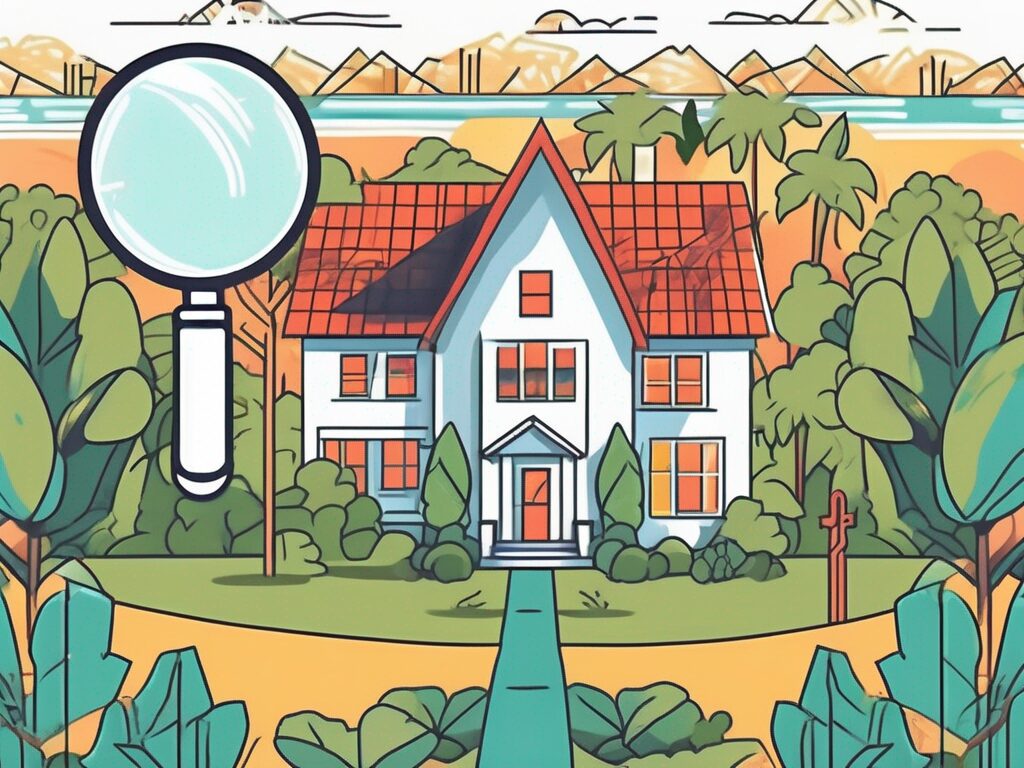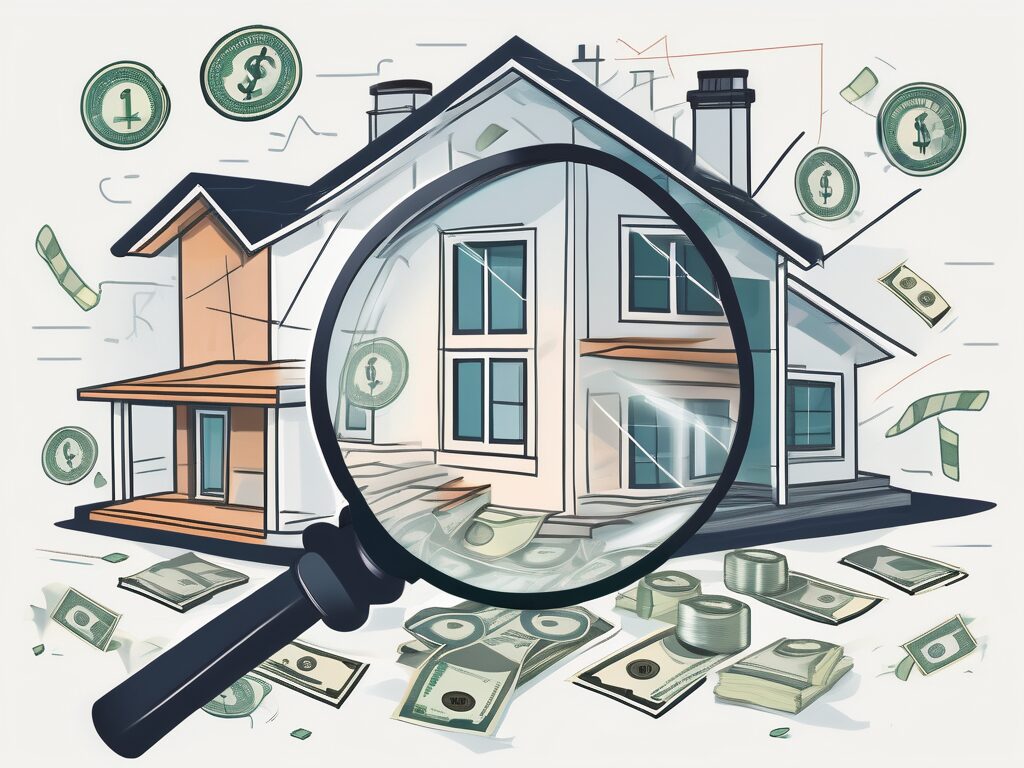
Agent A-Team or Solo Superhero? Finding the Right Real Estate Partner for Your Selling Journey in Wildwood Florida
When it comes to selling your home in Wildwood, Florida,…
January 29, 2024
In the process of buying or selling a home, one of the crucial aspects that often requires attention is a home inspection. Hiring a professional home inspector can provide you with a comprehensive evaluation of the property’s condition, identifying potential issues and giving you peace of mind. However, like any other service, home inspections come with a cost. In this guide, we will delve into the intricacies of home inspection costs, exploring the factors that influence prices, who is responsible for payment, what is included in the cost, and much more.
Before diving into the specifics, it is essential to gain an understanding of how home inspection costs are determined. The price of a home inspection can vary depending on various factors that play a role in shaping the final amount you will need to pay. By grasping these factors, you can better comprehend why prices may fluctuate and be better equipped to make informed decisions.
When it comes to determining the cost of a home inspection, several factors come into play. These factors can impact the overall cost and should be taken into consideration when budgeting for this important service.
Several factors can impact the overall cost of a home inspection. These include:
It is important to note that these factors are not set in stone, and the cost of a home inspection can vary from one property to another. Each home is unique, and the inspector will consider these factors when determining the price for their services.
The average cost of a home inspection can vary from region to region and even within cities and towns. To gain a better understanding of the average home inspection costs in your area, it is advisable to research local home inspection companies or reach out to professionals for quotes or estimates. This will provide you with a clearer picture of what to expect when budgeting for a home inspection.
Keep in mind that while price is an important consideration, it should not be the sole determining factor when choosing a home inspector. It is crucial to prioritize the qualifications, experience, and reputation of the inspector to ensure a thorough and reliable inspection.
When it comes to covering the cost of a home inspection, the responsibility typically falls on either the buyer or the seller. The decision regarding who pays for the home inspection is often influenced by market conditions, negotiations between the parties involved, and local customs or practices. Let’s delve into the potential scenarios:
In many cases, it is common for the buyer to assume the responsibility of paying for the home inspection. As the party interested in purchasing the property, the buyer wants to ensure they have a comprehensive understanding of its condition before proceeding with the transaction. By hiring a home inspector, the buyer can have confidence and peace of mind in their decision.
However, in certain situations, the seller may choose to cover the cost of the home inspection. This can be seen as an act of goodwill, providing potential buyers with an added incentive and demonstrating the seller’s commitment to transparency and assurance regarding the property’s condition. Ultimately, the agreement on who pays for the home inspection is negotiable between the buyer and the seller.
When the buyer assumes the responsibility of paying for the home inspection, they typically hire a professional home inspector who specializes in evaluating the condition of residential properties. The home inspector conducts a thorough examination of the property, assessing various aspects such as the structural integrity, electrical systems, plumbing, HVAC systems, and more. They provide a detailed report outlining their findings, which helps the buyer make an informed decision about the property.
During the home inspection, the inspector may uncover issues or potential problems that the buyer was not aware of. This can range from minor repairs or maintenance tasks to more significant concerns that may require further evaluation or negotiation between the buyer and the seller. The home inspection report serves as a valuable tool for the buyer to identify any potential red flags or areas of concern that may affect their decision to proceed with the purchase.
On the other hand, when the seller decides to cover the cost of the home inspection, it can be seen as a proactive approach to attract potential buyers and instill confidence in the property. By providing a pre-inspected home, the seller can showcase the property’s condition and address any issues upfront, potentially speeding up the sale process and minimizing the need for negotiations or contingencies.
It’s important to note that while the home inspection cost is typically the responsibility of either the buyer or the seller, there may be instances where both parties agree to split the cost. This can happen when negotiations are ongoing, and both parties want to demonstrate their commitment to reaching a fair agreement. Splitting the cost of the home inspection can be a way to share the financial burden and promote a cooperative atmosphere during the real estate transaction.
Additionally, it’s worth mentioning that the cost of a home inspection can vary depending on various factors, such as the size and location of the property, the complexity of the inspection, and the reputation and experience of the home inspector. Buyers and sellers should consider these factors when discussing who will cover the cost and budget accordingly.
In conclusion, the responsibility for paying for the home inspection is typically determined through negotiations between the buyer and the seller. Whether it’s the buyer, the seller, or a shared expense, the home inspection serves as a crucial step in the real estate transaction, providing valuable information and peace of mind to all parties involved.
Now that we have explored the factors that influence home inspection costs and the responsibility for payment, let’s take a deeper look into what is included in the cost of a home inspection. Understanding the scope of a typical home inspection will help you appreciate the value you receive from this crucial service.
A home inspection covers a thorough examination of various systems and components of the property, aiming to identify any existing or potential issues. The specifics of what is included in a home inspection report can vary between inspectors and companies, but typically, the inspection covers:
During a home inspection, the inspector will thoroughly examine the structural components of the property. This includes assessing the foundation to ensure it is solid and free from any cracks or signs of damage. The walls will be inspected for any structural issues, such as bowing or water damage. The roof will also be carefully examined to check for any leaks, missing shingles, or signs of wear and tear.
In addition to the structural components, the inspector will assess the plumbing systems of the property. This involves checking the pipes for any leaks or signs of corrosion. The fixtures, such as faucets and toilets, will be tested to ensure they are functioning properly. The water heater will also be inspected to determine its condition and efficiency.
Another crucial aspect of a home inspection is the examination of the electrical systems. The inspector will assess the electrical panels to ensure they are up to code and functioning safely. The wiring throughout the property will be inspected for any potential hazards, such as exposed wires or outdated systems. The outlets will also be tested to ensure they are properly grounded and functioning correctly.
The heating, ventilation, and air conditioning (HVAC) systems are also included in a home inspection. The inspector will assess the furnace or heating system to ensure it is in good working condition and properly maintained. The air conditioning system will be inspected to determine its efficiency and any potential issues. The ventilation throughout the property will also be assessed to ensure proper airflow and ventilation.
If specified in the inspection agreement, appliances will also be included in the inspection. This may include items such as refrigerators, dishwashers, or ovens. The inspector will assess the condition and functionality of these appliances to ensure they are in good working order.
Interior features, such as windows, doors, and flooring, are also part of a comprehensive home inspection. The inspector will assess the condition of the windows, checking for any cracks or signs of damage. The doors will be inspected to ensure they open and close properly and are secure. The flooring throughout the property will be examined for any signs of wear and tear or potential issues.
Exterior features, such as siding, gutters, and landscaping, are also included in a home inspection. The inspector will assess the condition of the siding, checking for any cracks, rot, or signs of damage. The gutters will be inspected to ensure they are properly installed and functioning effectively. The landscaping around the property will also be assessed to determine if there are any potential drainage issues or concerns.
It is crucial to review the home inspection agreement and discuss the specific areas or aspects you would like to be included in the inspection. This ensures that the inspection covers all the elements you consider important before making a purchasing decision.
While it is often the buyer who arranges and pays for the home inspection, sellers should also be aware of the financial implications associated with this process. By recognizing the potential costs involved, sellers can be better prepared and make well-informed decisions throughout the home selling journey.
When a buyer requests a home inspection, sellers should understand that any issues or concerns that arise from the inspection report may require remediation or negotiation. Addressing these issues can involve additional costs for repairs, updates, replacements, or concessions during the negotiation process. By being proactive and addressing potential issues in advance, sellers can minimize surprises and ensure a smoother transaction.
Both buyers and sellers can benefit from taking certain measures before the home inspector arrives. These steps help ensure a thorough and successful inspection process, providing valuable insights into the condition of the property.
Prior to the scheduled home inspection, consider the following steps:
By taking these steps, you demonstrate your commitment to ensuring a smooth and successful home inspection, facilitating an efficient evaluation of the property.
While a home inspection is a worthwhile investment, there are ways you can potentially save money on the overall cost. By being mindful of certain aspects and taking proactive steps, you can keep your home inspection expenses down.
Consider the following tips for saving money on your home inspection:
Applying these tips can help you optimize your spending while still benefiting from a professional home inspection.
In some cases, before listing a property for sale, sellers may choose to conduct a pre-inspection. A pre-inspection provides an opportunity for sellers to identify and address potential issues in advance, potentially streamlining the selling process and preventing surprises. Let’s explore pre-inspections further.
A pre-inspection is a thorough evaluation of a property’s condition conducted by a professional home inspector before listing it for sale. The purpose of a pre-inspection is to provide sellers with an understanding of the property’s condition, allowing them to address any issues before prospective buyers conduct their own inspection.
The cost of a pre-inspection can vary depending on the size, age, and complexity of the property, as well as the location and the qualifications of the inspector. However, it is essential to consider the potential benefits of a pre-inspection, such as reducing negotiation or repair costs, enhancing buyer confidence, and potentially expediting the sale process.
Deciding whether a pre-inspection is worth the investment involves considering various factors and your individual circumstances. While a pre-inspection can offer several advantages, it may not be necessary or beneficial in all situations.
Let’s examine some pros and cons to help you make an informed decision:
Ultimately, the decision to get a pre-inspection should be based on careful consideration of these factors and a discussion with your real estate agent or advisor, who can provide personalized insights concerning your specific circumstances and local market dynamics.
As you embark on the home buying or selling journey, understanding the breakdown of home inspection costs is paramount. By acquainting yourself with the factors influencing prices, the responsibilities for payment, and the inclusion of services, you can navigate the process with confidence. Whether you are a buyer or a seller, taking the necessary steps before and during the home inspection can facilitate a successful transaction. Keep in mind the tips for saving money and weigh the pros and cons of a pre-inspection. Armed with this knowledge, you can ensure a smooth home buying or selling experience while maximizing the value provided by a professional home inspection.

If you want the Richr team to help you save thousands on your home just book a call.
 Book a call
Book a call